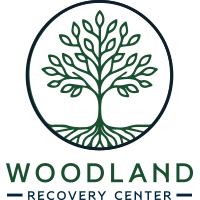Crystal, crank, chalk, and trash. These are various street names used to refer to methamphetamine, commonly known as “meth.” This addictive substance is a central nervous system stimulant, which means it speeds up the messages traveling between the brain and body. It also suppresses appetites and increases alertness, energy, and feelings of well-being. Meth is a very dangerous substance. Meth is incredibly addictive, and even a small dose can have serious health repercussions. Overcoming the severe withdrawal symptoms associated with meth is challenging, underscoring the importance of seeking professional assistance.
If you have a meth addiction, it’s essential to get help from a medical professional to ensure a safe and successful recovery. Our treatment center offers a meth addiction treatment program that can provide you with the care and support you need to overcome your addiction and get your life back on track. Call us today at 662.222.2989 to learn more about our addiction treatment programs and how to start your journey to recovery.
What Is Meth?
Meth is a powerfully addictive substance that was developed in the early 20th century. It was first used in nasal decongestants and bronchial inhalers. Meth is different from other amphetamines because when you compare the same dose of each, meth is much more potent. This potency makes meth more harmful to the brain.
Meth is used in four different ways. It can be smoked, snorted, injected, or taken orally (in pill form). In most forms, it looks like a white, crystal-like powder. It can also take the form of bluish-white rocks or look like fragments of glass. Meth is a Schedule II substance, meaning that it has a high potential for misuse but can still be administered by doctors. Even then, it is still administered through a non-refillable prescription. Doctors may prescribe it for weight loss or attention-deficit/hyperactivity disorder (ADHD), but those prescriptions are for small doses.
Meth addiction develops quickly, and its effects can be felt almost immediately. The high from smoking or injecting meth lasts only a few minutes, while the high from snorting or taking it orally lasts for a few hours. After the initial high, there is a crash where the user feels tired and depressed. This leads to the user taking more meth to try and achieve the original high, which starts the cycle of addiction.
Symptoms of Meth Withdrawal
Part of the detox process is dealing with not having that substance in your system anymore. This portion is called withdrawal, and it can have physical, mental, and emotional symptoms. How severe these symptoms will be can depend on how long the person was using meth and the amount of meth within one’s body. These meth withdrawal symptoms can include:
Physical Meth Withdrawal Symptoms
Some of the physical symptoms can include:
- Dry mouth
- Muscle spasms
- Malnourishment
- Headaches
- Fatigue
- Increased sleep
- Slowed heart rate
- Joint pain
Mental Meth Withdrawal Symptoms
Mental symptoms can include:
- Anxiety
- Depression
- Paranoia
- Sleeplessness
- Panic attacks
Emotional Meth Withdrawal Symptoms
While physical symptoms are complex, the emotional symptoms of withdrawal can be just as challenging. Addressing the emotional ties a client has to the substance will be an ongoing process during treatment, but the withdrawal symptoms will be draining for the client. Emotional symptoms of meth withdrawal include:
- Paranoia (extreme distrust of everyone)
- Psychosis (losing contact with reality, hallucinations)
- Anxiety
- Low motivation
- Intense cravings for meth
Don’t let these symptoms scare you. While they may sound overwhelming, our treatment center has the resources and expertise to help you overcome these challenges. Our team of medical professionals will be there to support you every step of the way.
Understanding the Meth Withdrawal Timeline
If you have wondered how long does meth withdrawal last, it depends on the person and how severe their addiction is. Meth withdrawal starts right after stopping the substance. There are two periods of withdrawal: acute withdrawal and subacute withdrawal. Acute withdrawal symptoms peak within the first 24 hours. A severe increase in sleep, depression, and cravings are a few of the symptoms felt during acute withdrawal. This phase lasts from a week to 10 days, and the symptoms steadily decline within that time frame.
The next phase is subacute withdrawal. This period of withdrawal lasts about two weeks, and the physical symptoms will continue to decline. The psychological symptoms will not be as severe as they were during acute withdrawal, but the ongoing treatment process will remedy these symptoms. Some people might experience post-acute withdrawal symptoms (PAWS ). Cravings and feelings of anxiety are some of the symptoms and can last up to six months. This is why we take a holistic approach to detox by addressing the mental health symptoms as well as the physical.
Why Is It Important to Get Professional Help for Meth Withdrawal Symptoms?
Managing meth withdrawal symptoms without professional intervention can be hazardous due to the severity and variety of symptoms one might experience. Professional help is crucial to ensure a safe and sustainable recovery. Here’s why:
- Medical supervision
- Medication management
- Psychological support
- Relapse prevention
- Comprehensive care
With professional support, you can navigate meth withdrawal symptoms more safely and effectively, setting a solid foundation for a substance-free future.
Contact Us to Start Your Recovery with Our Meth Addiction Treatment Program
We understand that the thought of overcoming meth addiction and dealing with withdrawal symptoms can be daunting, but you don’t have to face them alone. Our team of experts is ready to support you throughout your journey toward recovery. Taking the first step is often the hardest but also the most rewarding. Call us today at 662.222.2989 or contact us online and let our team guide you toward a healthier, meth-free life.



